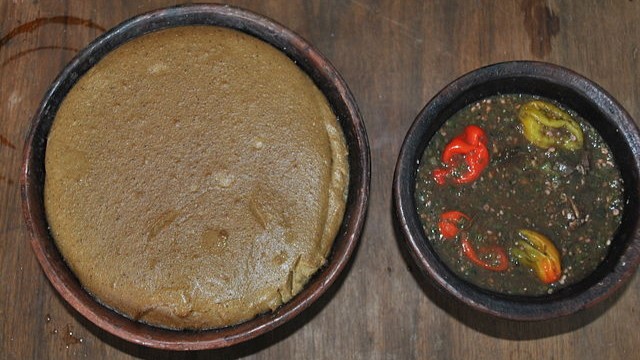In the sun-baked courtyards of Burkina Faso’s villages, where iron pots simmer over charcoal fires and the scent of ground grains drifts on the breeze, To takes shape. At first glance, it is modest—just a dense, starchy mound made from millet, sorghum, or corn flour. Yet this unassuming staple anchors meals across the country, carrying with it centuries of tradition, resilience, and shared experience.
Prepared daily in rural kitchens and urban homes alike, To is more than sustenance. It is a cornerstone of Burkinabé life, as intrinsic to communal gatherings as music and storytelling. The process begins with grains that have long defined the country’s agricultural rhythm. Ground to a fine powder, the flour is poured into water, stirred slowly over heat until the mixture thickens to a smooth, dough-like consistency. Achieving the right texture—pliable yet firm—demands a practiced hand, and the act of stirring, often done in long, sweeping motions, has a rhythm all its own.
Once ready, To is shaped into small rounded portions and served alongside a variety of sauces—each a distillation of local flavors, each with its own story.
Sauces as the Soul of the Dish
If To is the canvas, the sauces are the brushstrokes. Known locally as soupes, they draw from the region’s wealth of greens—baobab leaves, spinach, okra—simmered with tomatoes, onions, and either ground peanuts or sesame seeds. Proteins, when available, might include chicken, goat, or freshly caught fish, infusing the sauce with richness.
One ingredient stands apart: soumbala, fermented locust beans whose strong, umami depth is unmistakable. It is both a seasoning and a link to ancestral preservation techniques, a reminder of the ingenuity born from necessity. An okra-based sauce lends a subtle viscosity, clinging to each bite of To, while peanut-rich variations offer creamy, nutty contrast. Together, these combinations create a meal at once comforting and deeply flavorful.
A Dish for All Seasons and Settings
In Burkina Faso, To is present at life’s everyday moments and its milestones. It anchors family dinners, fills bowls during harvest celebrations, and is passed around at weddings and naming ceremonies. In rural areas, large pots are set over open fires, with neighbors arriving to share in the meal—a tangible expression of hospitality. Its adaptability is part of its enduring appeal: the dish welcomes both the simplest accompaniment and the most elaborate feast.
Cultural Threads Woven in Grain
The making of To is as much a cultural act as a culinary one. From the grinding of grain to the slow, deliberate stirring, its preparation is often communal, spanning generations. Elders teach the technique to children, ensuring its survival not as a relic, but as a living tradition.
In times of scarcity, To’s reliability has been a quiet safeguard. In times of abundance, it has been a medium for culinary creativity. Its enduring place at the table speaks to a broader truth: that in Burkina Faso, food is as much about connection as it is about nourishment.
A Taste That Endures
To’s appeal lies not in novelty but in constancy. While global culinary trends shift, it remains rooted—an everyday ritual, a celebratory centerpiece, and a link between past and present. Paired with a vibrant sauce, it offers a sensory journey into the heart of Burkina Faso, where simplicity and depth find their balance in a single, timeless dish.
Sources:
- Bradt, Hilary. West Africa: Food and Culture. Bradt Travel Guides, 2019.
- Haden, Roger. Food Culture in Sub-Saharan Africa. Greenwood Press, 2009.
- National Museum of Burkina Faso. “Culinary Traditions and Cultural Heritage,” Ouagadougou, 2021.

